Flesh and Blood is, more than any other card game I’ve played, a melting pot of players. If you poll a random Armory, you’ll find an incredibly diverse mix of gaming backgrounds – both hardcore professionals and casuals, both TCG veterans and newcomers, both disgruntled refugees from other games and connoisseurs that actively play multiple.
With all these widely varying backgrounds comes a lot of TCG slang inherited from other games. Some of it is very intuitive, and arguably fits Flesh and Blood better than its original source – swinging being shorthand for attacking with a permanent quite literally describes what Dorinthea is doing with her sword as she activates Dawnblade.
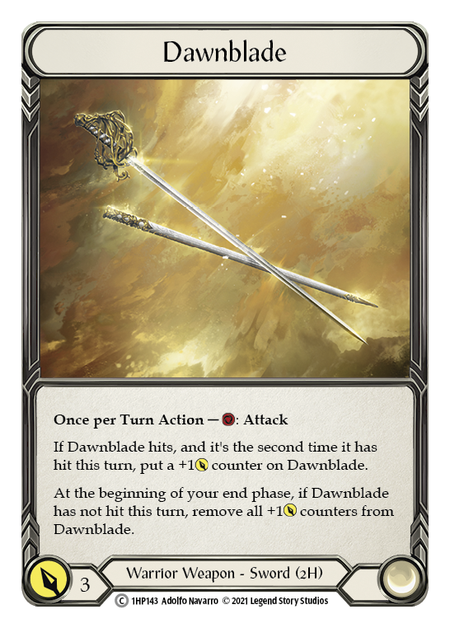
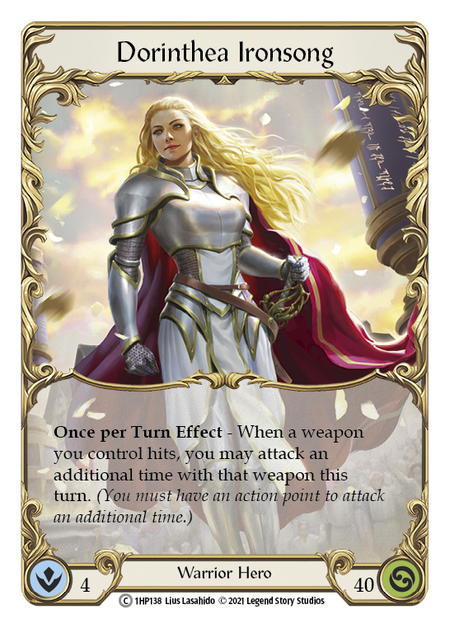
However, there are also a multitude of terms that get used despite not necessarily describing FaB accurately. The most notorious example of ill-fitting borrowed phrases in Flesh and Blood is the way that we use “aggro,” “midrange,” and “control” to vaguely describe decks that spend none, some, or all of their hand blocking vs attacking. Some of these ideas are seeing pushback or contextualization within the FaB ecosystem – Dylan Davis has an excellent series published here at the Rathe Times that reframes FaB not as a card game of aggro and control, but as a fighting game of rushdowns and zoning.
In this article, I want to offer some push back on my least favorite piece of borrowed slang in FaB, and one of my biggest pet peeves when it comes to spoiler season or evaluating cards in general: the idea of some cards in Flesh and Blood being “winmore.”
Defining Winmore
To start, we have to agree on what being "winmore" even means. Like many borrowed terms, winmore comes from Magic: the Gathering (MtG), a trading card game where players slowly build resources up over time to cast increasingly expensive cards – quite the opposite of FaB’s “start at your strongest and become worn down over time” role-playing-like design space. MtG also has a strong focus on persistent board states, with ally-like creatures being one of the most common card types. This one-two punch of accumulating resources in Magic means there is a certain class of cards in the game that are only really useful if you are already strongly favored to win the game; these cards help you “win more” but don’t actually help you stabilize in games you are losing.
Winmore cards don’t exist in Flesh and Blood.
At least, many players talk about them as if they are much, much more common than they actually are. I’ve identified four rough categories that most alleged winmore Flesh and Blood cards fall under: build around payoffs, trinket text value traps, wasted sideboard silver bullets, and actual winmore cards. I’d like to dissect each of these and argue against them.
Myth: Build-Around Payoffs are Winmore Cards
The first class of cards in Flesh and Blood that get confused with being winmore are "Build Around" payoff cards. Build Arounds are a card archetype that require you to put a little extra work in to realize their full potential, whether that is through deck building choices that cater to enabling your payoff, or adapting play lines on a given turn to satisfy additional payoff costs - including play lines that may seem sub-optimal without the larger context of being paid off for the work at the end. Build Around cards frequently get accused of being winmore, accompanied by the argument that a deck is better off playing cards that are individually more efficient and aren’t as restricted. Let’s scrutinize one of the best examples of an alleged “winmore” build around: Maximum Velocity (Max V).

Max V has seen a roller coaster of playability. Once upon a time, it arguably was a winmore card. For a considerable portion of the game’s lifespan, Mechanologist had a troublingly small card pool and a scarcity of inexpensive boost cards to enable Max V.
Bright Lights changed the name of the game. With the printing of cards like Sprocket Rocket and Expedite, the three boosts required to play Max V have never been more attainable.

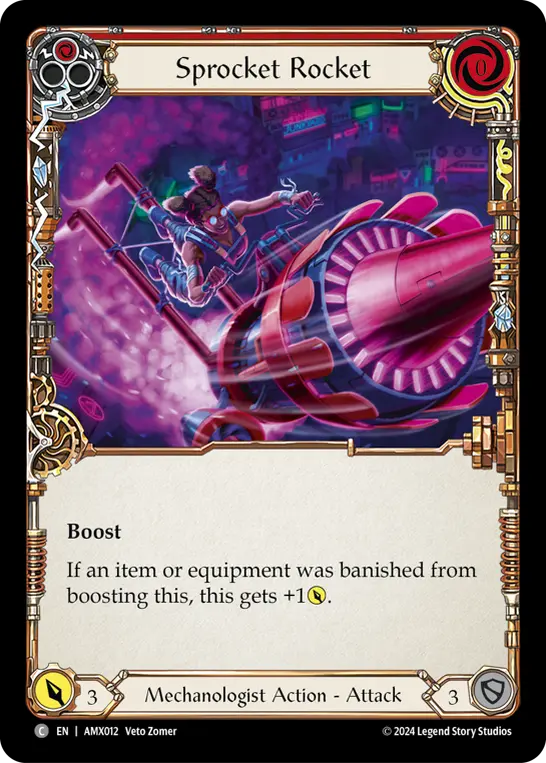
This has left it as the poster child of build-around payoffs: if you build your deck with Max V in mind, you can pull it off. Some contrarians will argue that the juice isn’t worth the squeeze; if you already boosted three times in one turn, you were already winning the turn cycle anyways – and thus, Max V is a winmore card. In fact, if all you cared about was playing Max V, it would be winmore; that three boost clause is a harsh restriction that doesn’t happen every turn cycle. This is one of the defining features of winmores: they rot in your hand being useless when you aren’t winning.
But, one of the beautiful things about FaB is that almost every card in the game has a much higher floor than doing nothing. Obviously you don’t really want to pitch Max V for one resource, but blocking 3 with it? There’s much, much worse things you can be doing than getting 3 value out of your card that has an unbelievably high damage ceiling.
This is, of course, just one example. I think the vast majority of cards accused of being winmore in FaB fall into this build around category, and they aren’t all necessarily aggressive cards. Some other examples include Singularity, Dracona Optimai, Oblivion, and Shaden Death Hydra.
Myth: Having Trinket Text Makes Cards Winmore
The second class of winmore cards conflates actual winmores with cards that have trinket text. The best example of this is the Surge mechanic, specifically on Swell Tidings. Making a ponder from Swell Tidings’ surge trigger is sometimes described as being winmore. The logic is that if you are triggering surge after using Crucible of Aetherweave, your opponent doesn’t have arcane barrier, and so they are largely already dead to your arcane damage without the need for the ponder.
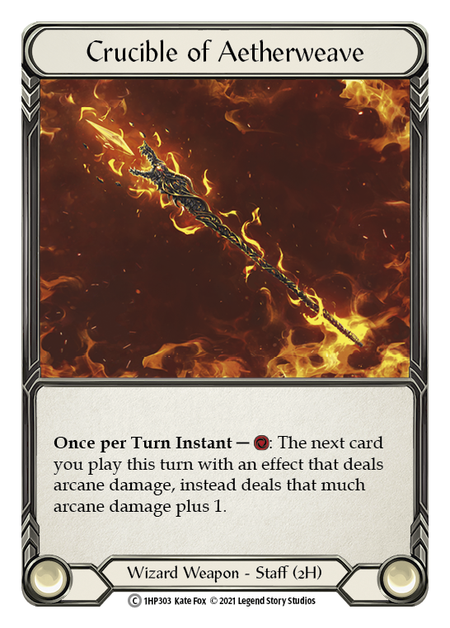
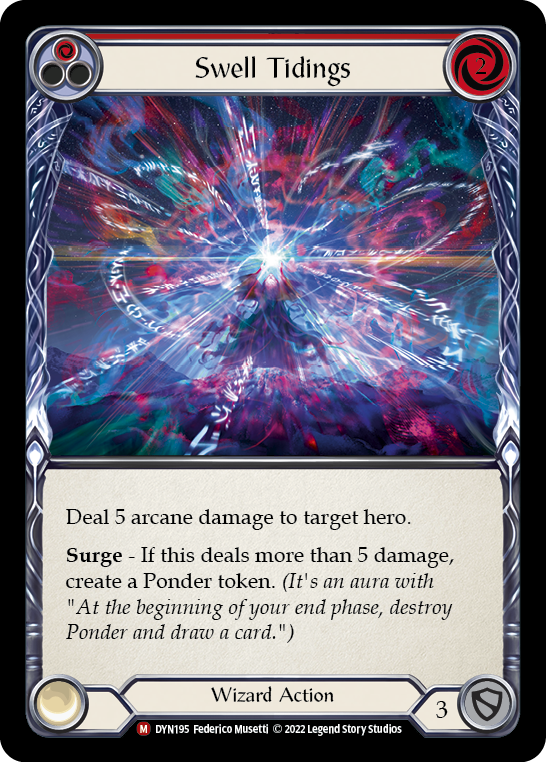
Winmore? Buildaround? Trinket Text? This article is full of slang unto itself!
Trinket text is rules text on a card that is relevant to the game so infrequently that it might as well be flavor text.
I think winmore accusations like these largely can’t see the forest for the trees. Like we saw with Max V, Swell Tidings is hardly unplayable when the opponent can voluntarily prevent the Surge - red Voltic Bolt was a staple card in Kano for a long time before Swell Tidings was printed, after all.
But even when the surge on Tidings isn’t commonly triggered, there is a massive amount of implied value in threatening it. Some heroes won’t bat an eye at 6 arcane damage, but 6 arcane damage and the opponent functionally draws a card if it’s left unblocked? That’s much more likely to get the opponent to weaken their turn by pitching an offensive card to arcane barrier.
From this perspective, I would go so far as to argue that Swell Tidings making a Ponder token isn’t winmore, and in fact, Swell Tidings not making a ponder token is helping you win the game, though the value might not be immediately evident.
There’s a multitude of these underrated trinket text winmore cards, too many to discuss here. If you want to reconsider a few in addition to the surge mechanic, I recommend taking another look at cards like Bios Update, Cryptic Crossing, Demolition Protocol, and Melting Point.
Myth: Teching for an Already Favored Matchup is Winmore
Third - and this might be the most surprising argument I see leveraged as cards are declared winmore - “this matchup is already favored, playing that card is just winmore.” This interaction occurs staggeringly often in FaB discussions, and I think it actually captures a unique evolution of the word beyond its original meaning into something more FaB-specific.
Matchup prep, both in deckbuilding and in pregame procedures, is pretty unique in FaB. Every deck being centered around a hero that you know ahead of time, and all arena deck modifications being made before the best-of-one game begins, means that the lines between mainboard and sideboard are blurry at best. As constructed metagames evolve, this means that many decks can become incredibly adaptable based on what they expect to play against most frequently.
Let’s consider an extreme example: late in Iyslander’s lifespan in CC, as Katsu and Royal Dromai began to rise in popularity, some pilots considered Channel the Bleak Expanse (CBE) as a silver bullet answer to these matchups.
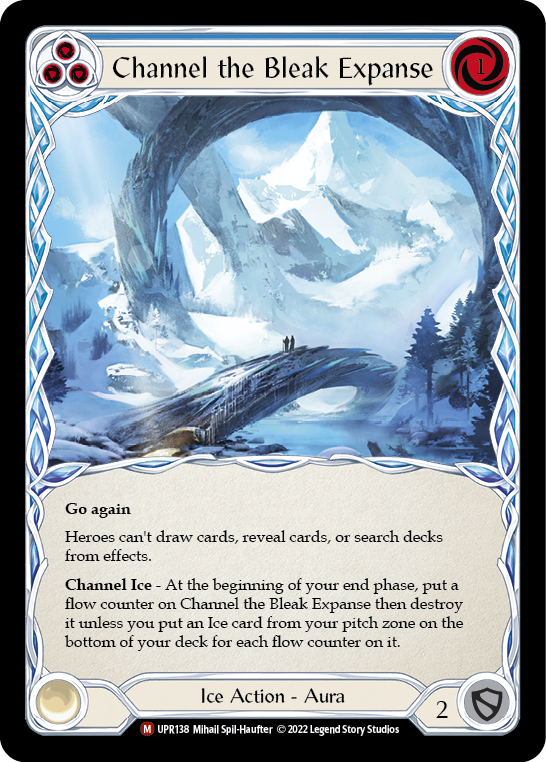
This proposal was highly controversial among the Elemental Wizard community, and was frequently labeled as playing a winmore card to “fix” an already favored Katsu matchup. While Channel the Bleak Expanse ended up not seeing widespread constructed play, it was strong at essentially all stages of the game against Katsu, primarily because it denied his hero ability searching for combo cards out of his deck to fix clunky hands.
This misuse of winmore is the most interesting to me because it seems like the most clean-cut in not aligning with the actual definition at all. But, I think this use is also filling an interesting gap in the available slang; language evolves over time, and the ability to describe a suboptimal use of sideboard space when mathing out the win percentage calculus with a single shorthand word or two is a useful tool for a player base to have. I am curious if we will see a mass adoption of this modified meaning in FaB’s future.
So What is ACTUALLY Winmore in FAB?
This begs the question: what do winmore cards actually look like in Flesh and Blood? We’ve already identified that they they’re stuck in your hand when you’re behind and they only help when you’re ahead. They also tend to be rather big and splashy, though that isn’t always the case. They’re less defined by demanding building around them for success, or unlocking specific lines of rules text. As we outline these rules, a pretty clear picture comes to my mind:
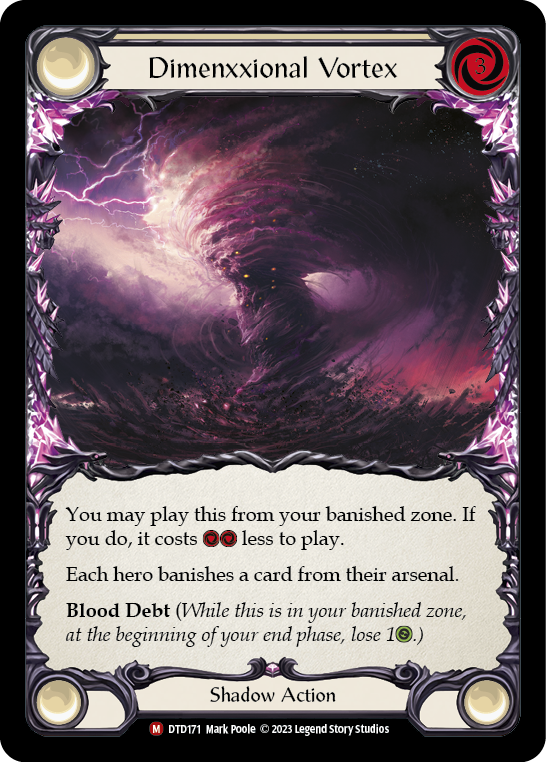
Now this is a winmore card. It checks all the boxes: it gets stuck in your hand, it has marginal uses while you’re behind, and while you’re ahead and have a blood debt card in your arsenal to banish it’s strong, but you were going to win the game anyways!
But notably, I really had to scrape the bottom of the barrel to find this one. I think this just further emphasizes my point: “winmore” is an ill-fitting term for Flesh and Blood, where almost every card can serve multiple roles between playing, pitching, and blocking.
The next time you are getting ready to dismiss a card as winmore in the upcoming Heavy Hitters spoiler season, I would like to challenge you to pause and reconsider: is this card winmore, or is it asking me to wager a higher opportunity cost in exchange for a higher payoff?




